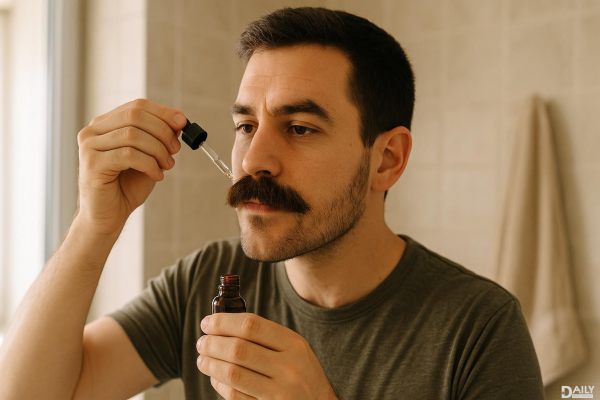If you're dreaming of a thicker, fuller mustache but feel like your facial hair is stuck in slow-mo, don't worry—you're not alone. Genetics play a role, but there are natural ways to give your 'stache a boost. From tweaking your diet to upgrading your grooming routine, these science-backed tips can help you grow a bushier mustache without resorting to sketchy shortcuts.

Your mustache grows from the inside out, so loading up on the right nutrients is like giving your follicles a five-star meal. Protein is the building block of hair, so aim for at least 0.8 grams per pound of body weight daily—think eggs, salmon, and grass-fed beef. Don't skimp on biotin (found in nuts and sweet potatoes) or vitamin E (hello, avocados and spinach), which improve keratin infrastructure. Zinc and iron are also clutch for preventing patchiness; oysters and lentils have you covered. And if you're vegan? No sweat—pumpkin seeds and tempeh are solid plant-based alternatives. Pro tip: A collagen supplement can give your mustache game an extra edge by supporting hair structure.
Your mustache follicles thrive on circulation, and a daily 2-minute massage is like rush hour traffic for nutrients. Use your fingertips to apply gentle pressure in circular motions along your upper lip, working outward toward the corners. For bonus points, warm a few drops of castor or jojoba oil between your palms first—these natural oils penetrate hair cuticles while stimulating dormant follicles. Studies show regular scalp massages increase hair thickness by up to 15%, and the same principle applies to facial hair. Make this part of your nightly routine (maybe during your skincare regimen) and you'll likely see softer, faster-growing whiskers within weeks.
Contrary to barbershop lore, frequent trimming doesn't actually speed up mustache growth—hair grows from the root, not the tips. But here's where strategic grooming comes in: While waiting for length, use sharp scissors to clean up stray hairs every 2-3 weeks, focusing only on split ends. This prevents breakage that can make your mustache look thinner. Avoid shaving the area completely; it's an old wives' tale that shaving creates thicker regrowth. Instead, embrace the awkward phases with mustache wax to train hairs in your desired direction. Patience is key—most guys see noticeable improvement after 4-6 weeks of consistent care.
Cortisol isn't just bad for your waistline—this stress hormone can literally put your mustache follicles into hibernation mode. Chronic stress diverts nutrients away from hair growth to more "essential" bodily functions, leading to slower growth or even shedding. Combat this with 7-8 hours of quality sleep (when most hair regeneration occurs) and stress-busters like weight training or meditation. If you're dealing with major life stress, adaptogenic herbs like ashwagandha can help regulate cortisol levels. And don't underestimate the power of hydration: Aim for half your body weight in ounces of water daily to keep hair cells plump and growing efficiently.
Before you splurge on expensive growth serums, try this dermatologist-approved DIY: Mix 1 tablespoon of aloe vera gel (fresh from the plant if possible) with 5 drops of peppermint essential oil. Apply to your mustache area after cleansing at night—peppermint oil has been shown in studies to increase hair thickness comparably to minoxidil, minus the side effects. Aloe soothes skin while unclogging follicles blocked by dead cells or product buildup. For extra oomph, add a pinch of cinnamon powder (a natural vasodilator) to boost blood flow. Store leftovers in the fridge for up to a week. Consistency is crucial—apply 5-6 nights weekly for at least two months to see results.
Growing a thicker mustache is a marathon, not a sprint, but these natural methods stack the odds in your favor. Track progress with monthly photos (trust us, you'll notice subtle improvements), and remember that even legendary mustaches start as peach fuzz. Stay disciplined with your routine, and soon enough, you'll be twirling a handlebar worthy of a 19th-century railroad tycoon.
























